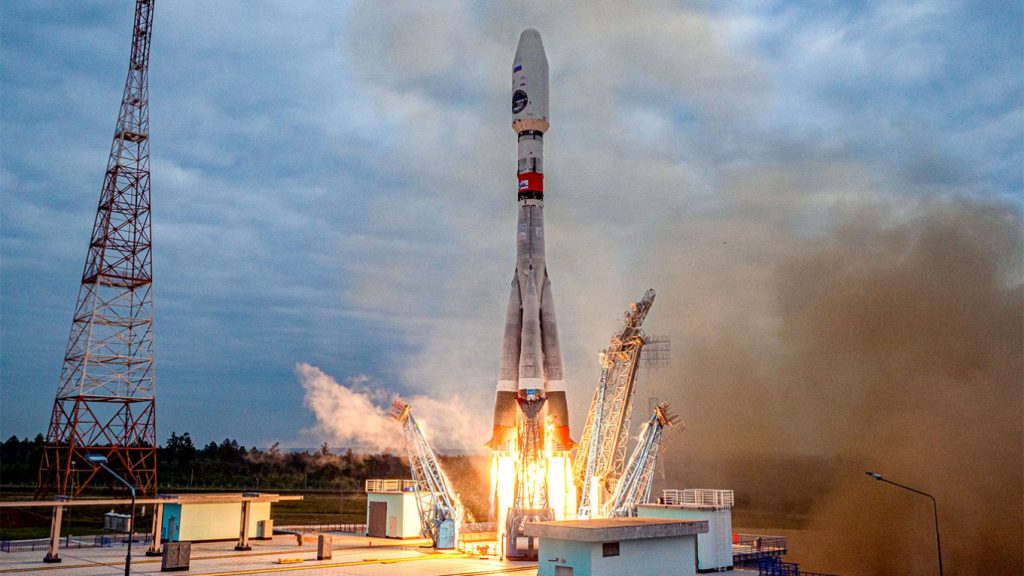Russia has resumed its goals beyond Earth’s orbit with the launch of its first moon mission since 1976, marking a significant advance in space research. At 7:10 PM EDT on Thursday, the Luna-25 spacecraft launched on its historic mission from the Vostochny Cosmodrome in eastern Russia, writing an important chapter in the history of the country’s space program.
The launch was broadcast live on YouTube by Roscosmos, the Russian space agency, and was seen by people all around the world. According to Reuters, Roscosmos stated that the expected duration of the spacecraft’s trip to the moon is five days. But the spacecraft won’t immediately touch down when it arrives at the moon. Instead, it will orbit the moon for an estimated five to seven days before attempting a gentle touchdown at one of three feasible locations close to the lunar pole.
The Luna-25 mission showcases Russia’s resolute determination to expand its celestial pursuits. This lunar lander, accompanied by a Soyuz 2.1a rocket, was meticulously crafted by Russian researchers with the aim of executing a soft landing on the moon’s south pole. The primary objective is to unearth ice resources that could be transformed into vital necessities such as water, oxygen, and rocket propellant. Russian aerospace company NPO Lavochkina, the mastermind behind the lunar lander, stated that Luna-25 will be the pioneer in achieving a soft landing in the southern polar region and conducting on-site examinations of potential ice deposits.
The mission’s core mission, as emphasized by NPO Lavochkina, revolves around the development of fundamental technologies for safe landings in challenging lunar environments and comprehensive investigations of the moon’s southern pole. Notably, the project was poised to include a navigation camera named Pilot-D, supplied by the European Space Agency. However, this component was scrapped due to geopolitical tensions arising from Russia’s actions in Ukraine.
Russia’s prior moon endeavor, Luna-24, managed to procure a sample of lunar material, showcasing the nation’s historical involvement in lunar exploration. To ensure the safety of the Luna-25 launch, an entire village named Shakhtinskyi was evacuated temporarily, reflecting the meticulous precautions taken during this mission. Although there’s minimal risk of rocket fragments reaching the village, the precautionary measures underline the significance of Russia’s lunar aspirations.
Russia’s resurgence in lunar exploration with the Luna-25 mission reiterates its commitment to advancing space technology and knowledge. As Luna-25 embarks on its trajectory, the world watches with anticipation, awaiting the valuable insights and discoveries that this landmark mission is set to yield.

